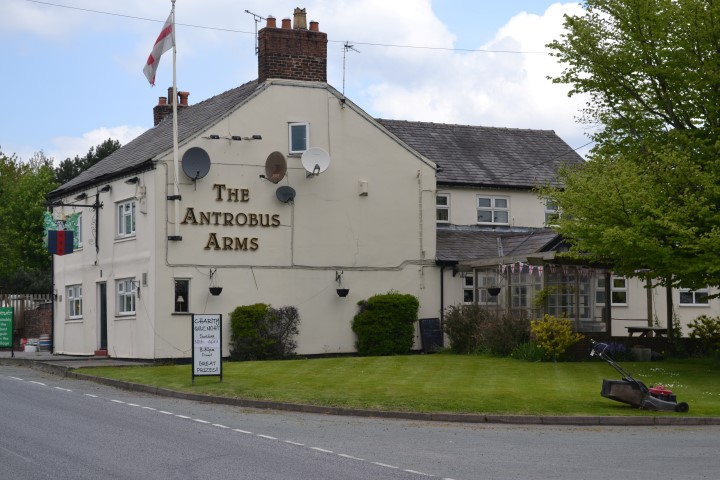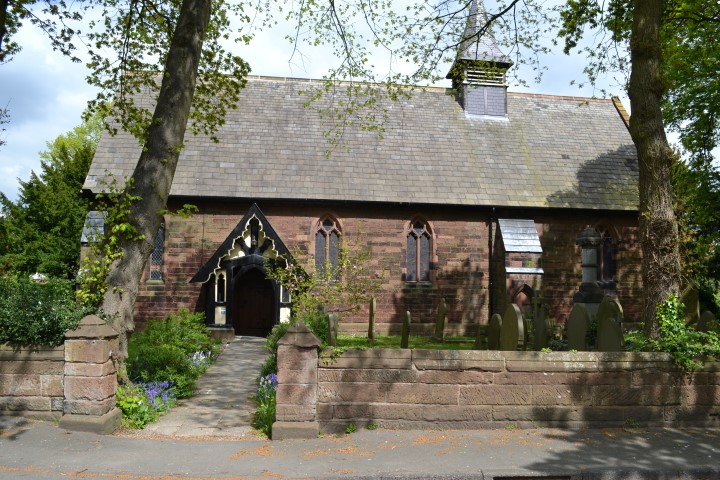Landmarks (in order of origin)
Whitley Reed (also known as Arley Moss) provided peat fuel from Roman times to the middle of the 19th century. In 1940 the War Agricultural Committee lowered the water table by diverting the brook at Arley Mill. It has since been further drained and cleared.
Quaker Meeting House. Meeting at Frandley is said to have originated by early Quakers visiting Frandley Farm in 1653. George Fox, the founder of the Quakers, is said to have preached from a large oak on the farm. This, the last of the seven oaks (Seuen Okes in 1353), was blown down in 1970. William Gandy gave land for a burial ground at Whitley (1657) and for the meeting house, built in 1676. It was replaced in 1881.
 Methodist Chapel. Origins of local Methodism go back to 1798, with meetings in Old Nook Farm. The first chapel was built on Barbers Lane in 1838. Its replacement was built adjacent to it in 1936 on land donated by Mr Bolshaw.
Methodist Chapel. Origins of local Methodism go back to 1798, with meetings in Old Nook Farm. The first chapel was built on Barbers Lane in 1838. Its replacement was built adjacent to it in 1936 on land donated by Mr Bolshaw.
 The Antrobus Arms, formerly the Wheatsheaf. A staging post on the Warrington Road in the 19th century. It was an inn before 1846.
The Antrobus Arms, formerly the Wheatsheaf. A staging post on the Warrington Road in the 19th century. It was an inn before 1846.
 Antrobus St Mark’s School, School Lane. The Eatons of ‘The Pole’ donated the land upon which the school was built in 1844, with additions in 1860 and 1873. The old “Horsa” building on the other side of the lane was pulled down and additions to the buildings added by 1998. The reception was later added and a pre-school nursery was started in 2013. Breakfast club and after-school are now available.
Antrobus St Mark’s School, School Lane. The Eatons of ‘The Pole’ donated the land upon which the school was built in 1844, with additions in 1860 and 1873. The old “Horsa” building on the other side of the lane was pulled down and additions to the buildings added by 1998. The reception was later added and a pre-school nursery was started in 2013. Breakfast club and after-school are now available.

Landmarks continued
St Mark’s Church was built in 1847 to have our own place of worship rather than travelling to Great Budworth. Rev George Eaton wanted it on Knutsford Road and Mr Jackson wanted it on his land at Frandley. After a debate, the former won. In 2013 an appeal was launched for a re-roofing and provision of internal facilities. The roof was complete in 2015. The village war memorial is inside the church.
 Antrobus Village Hall, Knutsford Road, was opened in 1939 after 7 years of fundraising on land donated by Mr Bolshaw and his sister Mrs Frith. It was a timber building. After several Country Fairs to raise funds, the new hall was built 1977-79. The field beside it was purchased. 1984 bar and cellar added. Millennium hall, toilets and activities room were completed in 1999. In 2009 a lounge and bar extension was completed. It was built by 10 mostly retired gentlemen who helped with the original hall in 1979.
Antrobus Village Hall, Knutsford Road, was opened in 1939 after 7 years of fundraising on land donated by Mr Bolshaw and his sister Mrs Frith. It was a timber building. After several Country Fairs to raise funds, the new hall was built 1977-79. The field beside it was purchased. 1984 bar and cellar added. Millennium hall, toilets and activities room were completed in 1999. In 2009 a lounge and bar extension was completed. It was built by 10 mostly retired gentlemen who helped with the original hall in 1979. 
The Village Shop, Knutsford Road has been operating from before 1962, latterly by the Collins family. From 2003 it has been run by volunteers, with profits returned to the community, and has helped maintain the Post Office.
Manley Close. After questionnaires and an open meeting in 1990, the project to build affordable housing for people with local links was launched. 6 rented and 2 shared ownership homes were built in 1993, with 2 more built later. There were 27 applicants for occupation. See also Your Community - History of Manley Close.

-- *** --
Acknowledgement. This information is extracted with permission from “Antrobus A Country Parish at the Millennium” produced by the Antrobus Heritage Initiative, copyright Antrobus WI 1999, and its update “Antrobus 2000 to 2015” in 2015. Copies can be purchased from the Village Shop or by contacting the Clerk.
The Post box on Brow Lane
...is in fact an old and rare heritage box from the reign of Edward VII (1901-1910). He was the eldest son of Queen Victoria.